Hey cool you're all pinnacled up now. That's at least three of us here now. I usually expect minor flaws when I buy mass produced glass pieces, but having the percolators not line up is the thing I have the least tolerance for, since that's what matters the most. Looking at yours, it seems fine, doesn't seem crooked at all from what I can see.
One difference I can notice, between the pinnacles I got from sunshinestore on DHGate, is that the "up stem" that comes first in the vapor path from the mouthpiece / 14mm joint, before it reverses and goes into the water / perc, your upstem seems to have alot more space between the roof. Looks Like yours has a few mm more clearance, my upstem is very close to the roof, maybe 2-3mm gap.
I wonder how that would affect the performance? Maybe allows more airflow, but also more easily allows for water to spill back into the mouthpiece if tilted?

But
damnit.... you and OF made me do something I haven't done in years....
algebra.

@Vape Donkey 650 I think you are quite right about the errors. I've been trying to get a white DT 2.7 unit and a black e-bay zigzag coil unit "dialed in". I'm not concerned here with how they vape, I first want the temp to be reasonably accurate, then adjust temp. And I'm finding it really hard. I have a thermocouple meter, an IR gun and mercury thermometers. The calculation I believe goes like this:
R0 is resistance at base temp in ohms
RT is resistance at high temp in ohms
DeltaR = RT - R0
T0 is base/room temp in celcius
TT is high temp in celcius.
DeltaT = TT - T0
So here's an eVic VTC mini run last night
on a DT 2.7 ceramic atomizer in TC mode with M2 TCR = 220,
wattage 12.0 and target temp 350 F. We measure:
R0 = 0.85 ohms
RT = 1.15 ohms
DeltaR = 0.30 ohms
T0 = 25 deg C
TT = 215 deg C
DeltaT = 190 deg C
Right off the bat we see that the temp is overshooting,
215 deg C = 419 deg F, not the desired 350.
Here's the calculation: (@OF does this agree w/ yours?)
Evic TCR = ( (DeltaR / R0 ) / DeltaT ) * 100,000
TCR = (0.3 / 0.85) / 190 * 100000
TCR = 186
Now that's way off from 240. And even 220. So which is right? Well, since we were overshooting, it seems that 220 was too high. So the 186 is plausible. (And maybe I got the calculation all wrong?)
Still, with TCR set to 186 I get closer to target temp as measured.
Which works better? Of course if you just want to vape w/ more heat, then 240 will deliver. But what temp are you getting? It doesn't matter if you're just after results, you can adjust whatever, until you like it. I would rather try for the kingdom, if I can, then raise the target temp.
But why this difference? I think that the difficulty of measuring TT is a huge source of uncertainty. The donuts do not heat up evenly. Even if you measure with the thermocouple immersed in oil or glycols, heat flows faster in the donut than in surrounding fluids, so you get big differences depending on where you place it. With a mercury thermometer you can't immerse more than the tip of the bulb. Using an IR gun with E set to 0.50 isn't bad but the uneven heating doesn't go away and it's so fast that you have to learn how to average or disregard the instantaneous peaks.
None of these methods provide a super accurate reading of the temp that most of your shatter sees. I suppose if we filled a deep dish DT with mineral oil we might get a better temp reading, but somehow flavoring a DT atomizer that way is asking a lot.
Another problem is the non-linearity you point out and that we don't yet know the extent of. And there's the controller itself. It too is having a hard time measuring temperature as it aims to control it. If you're building a mod using inexpensive chips, or emulating that using, say, an Arduino, you don't have a lot of fancy circuitry. Your A/D inputs are 10 bit with at best a reference pin, and your D/A are usually just filtered PWM. This isn't lab equipment. There's a lot of slop here.
I'm not at all complaining, BTW, this is excellent techno, and aeons further along than what we had even a year ago.
Thoughts anyone?
Let me clear up a few things first: that formula IS what joyetech / eleaf / others are doing with the 1-999 TCR values we can input?
For RT, are we choosing for our resistance to rise 0.3 Ω because that is what we have observed and we like it, or is there something more inherent or mathematical for this value I'm missing here? Because sometimes I like it to rise 0.35 Ω over cold, when I'm calling for my "hotter" temps. How does this hotter request effect the relationship between variables?
And, TT is the temperature that we are
calling for, or is that an
observed temperature?
Still not sure what those variables should be, I went and ran the formula a few times with the help of my good ol' microsoft pals,
notepad and
calculator.
I have several low 0.7x Ω bases and I'm trying to get my coil 193c (380F), but my house isn't as hot as fernand's, more like 21c (70f). I expect that to be a 0.30 ohm rise on most coils.
R0 = 0.72
RT = 1.02
DeltaR = 0.3
T0 = 21
TT = 193
DeltaT = 172
242.24 = ( (0.30 / 0.72) / 172 ) * 100,000
So hey... that's pretty close to what I'm using. Or is that just because I'm working backwards with known variables that I use?

But let's say I want that hotter coil to finish the load. That could be a 0.33 rise, or even 0.35 is what I see sometimes with 410-420F for my setting. Let's say here I want 0.35 rise and my screen to say 420F (215c)
R0 = 0.72
RT = 1.07
DeltaR = 0.35
T0 = 21
TT = 215
DeltaT = 194
250.57 = ( (0.35 / 0.72) / 194 ) * 100,000
So now my TCR is a little higher. What does that mean, that I should dial in the TCR a little higher if I want it to be accurate at higher temps? lol

idk. too much math making my brain hurt now, but we're not done.
I also have some
0.8 Ω er's. For some reason, I've never liked the higher resistance donuts, I've always felt I've gotten hotter, less consistent vapor with them, when using the same settings, even without TCR, on TC-Ni, I might ask for 300 or 310F when I would ask 320-330 with a 0.70 ohm coil to meet my taste.
But here's a test: my highest donut, I'm asking it to rise 0.3 Ω and hit 380F?
R0 = 0.83
RT = 1.13
DeltaR = 0.3
T0 = 21
TT = 193
DeltaT = 172
210.14 = ( (0.30 / 0.83) / 172 ) * 100,000
So that's a much lower TCR value. Does that mean we should dial in a lower number if our donut base resistance is higher?

Let's take it further, I want my high Ω donut to rise 0.35 now and hit 420F for me.
R0 = 0.83
RT = 1.18
DeltaR = 0.35
T0 = 21
TT = 215
DeltaT = 194
245.16 = ( (0.35 / 0.83) / 172 ) * 100,000
Wow! That number looks familiar again!

So maybe that number is
just right for a resistance of that range that wants to hit those 400-ish temps. But maybe I'm making the fallacy of working backwards with figures of incorrectly assumed meaning and origin?

I need OF to intervene and tell me it's ok....

Either way he wins because he made me do algebra!

That's all the
merth I'm gonna do right now, but I still have to recognize the other inherent limits: our donuts don't heat evenly, are we calling for
peak temps or
average temps in the donut/lower cup area?
And of course, our mods are not thermometers, they are just pretty accurate at reading ohms Ω , and dispensing watts and volts in rapidly modulating ways. So if I'm getting this, that means that getting that cold base resistance measured correctly and locked in matters immensely in getting these TC mods to work as intended!
I'd say 80% of all problems I've seen with these (and other) sub-ohm attys working on TC mode in some degree has been due to not reading the base Ω correctly, and it can make your vape way too cold or burn up your hash very easily. Being off 0.02-0.03 Ω can be annoying, being off 0.1 Ω or more can mean black ash on your clean donut, or even breaking it with too much wattage



 mmmmm.... sub-ohm
mmmmm.... sub-ohm 
 USplastics never got back to my email (boo-hiss them) and I've been too busy with other vape projects to call them, but due to one of the said side-vape projects, I have acquired some
USplastics never got back to my email (boo-hiss them) and I've been too busy with other vape projects to call them, but due to one of the said side-vape projects, I have acquired some 

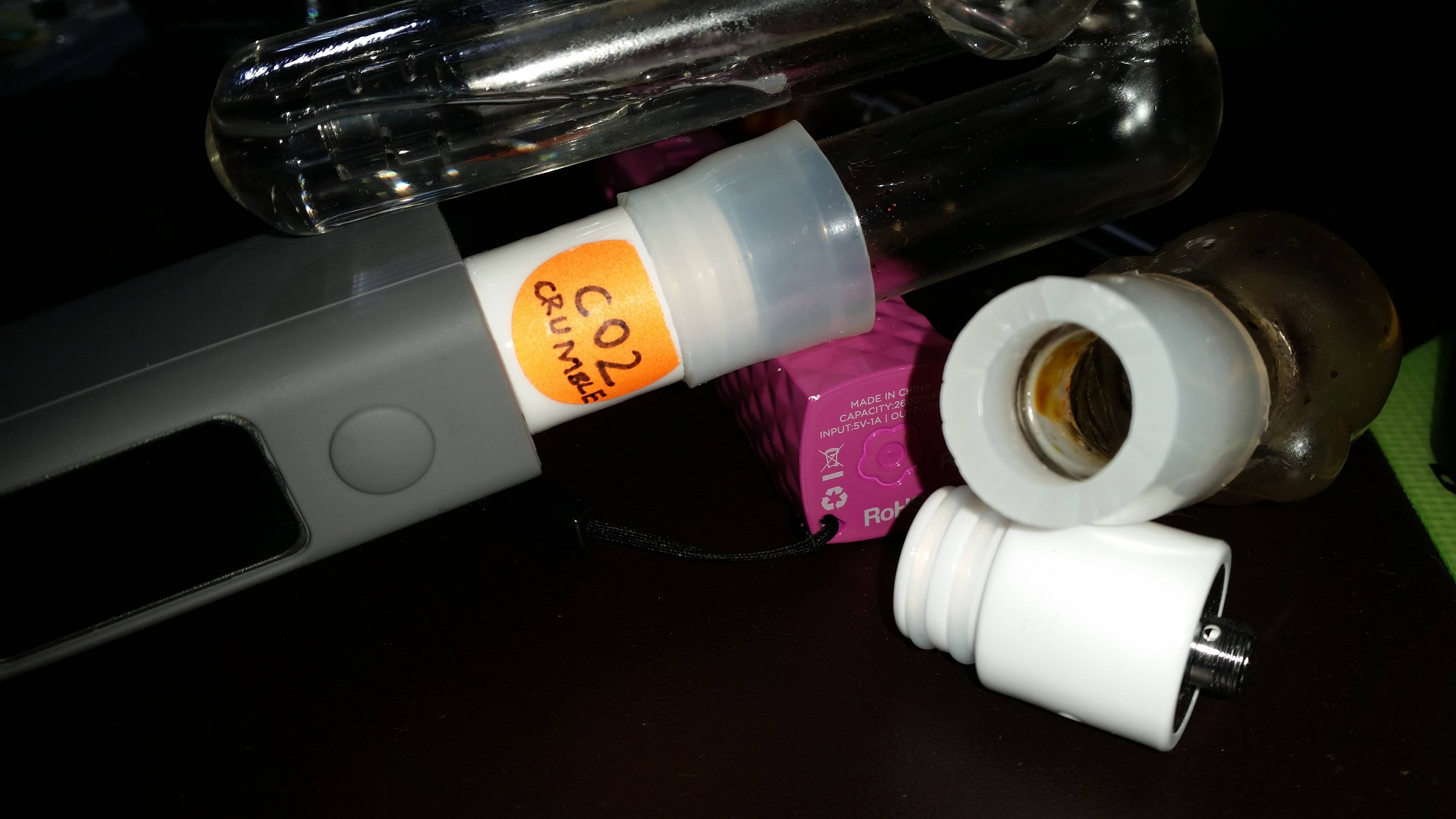








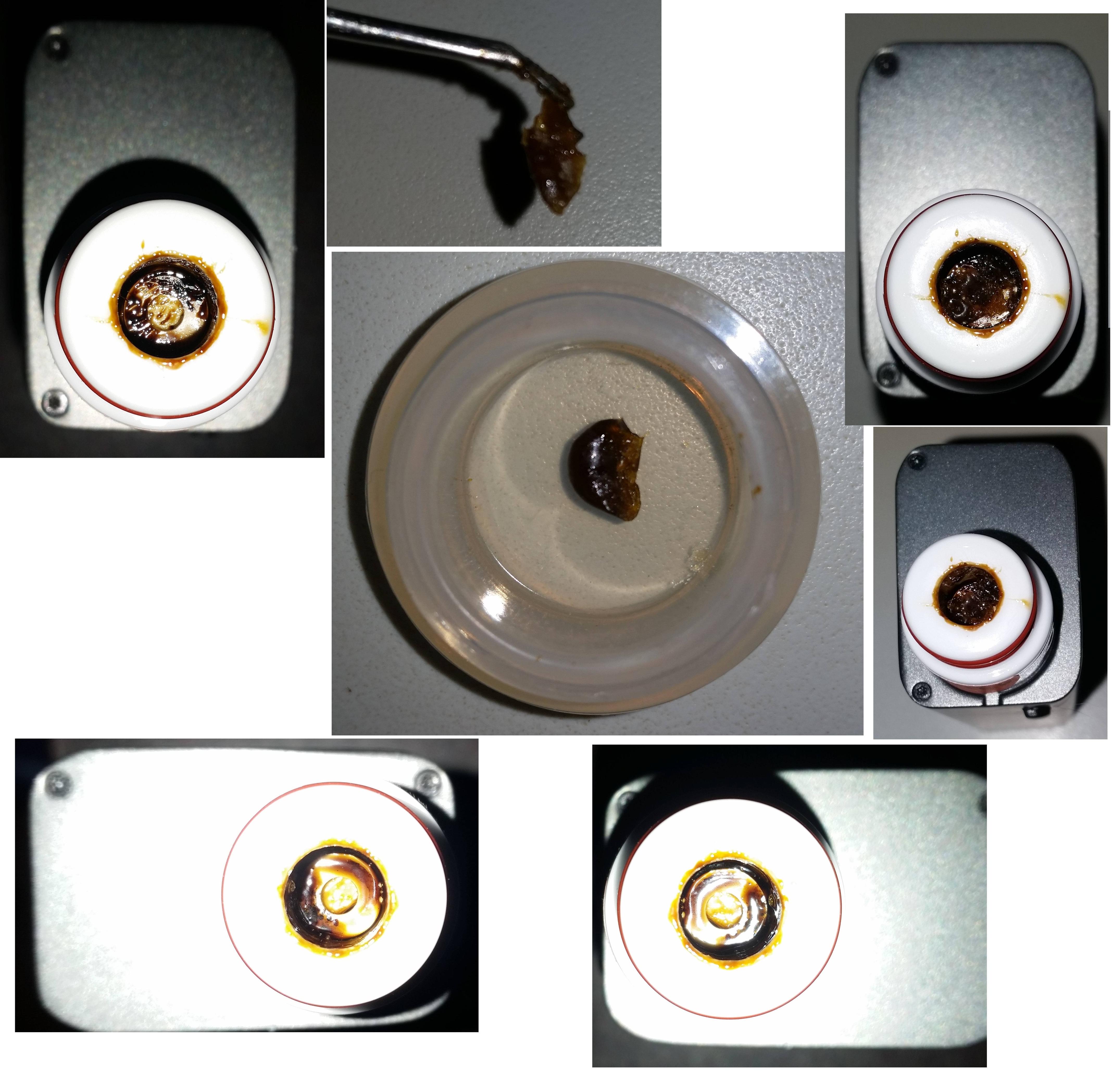



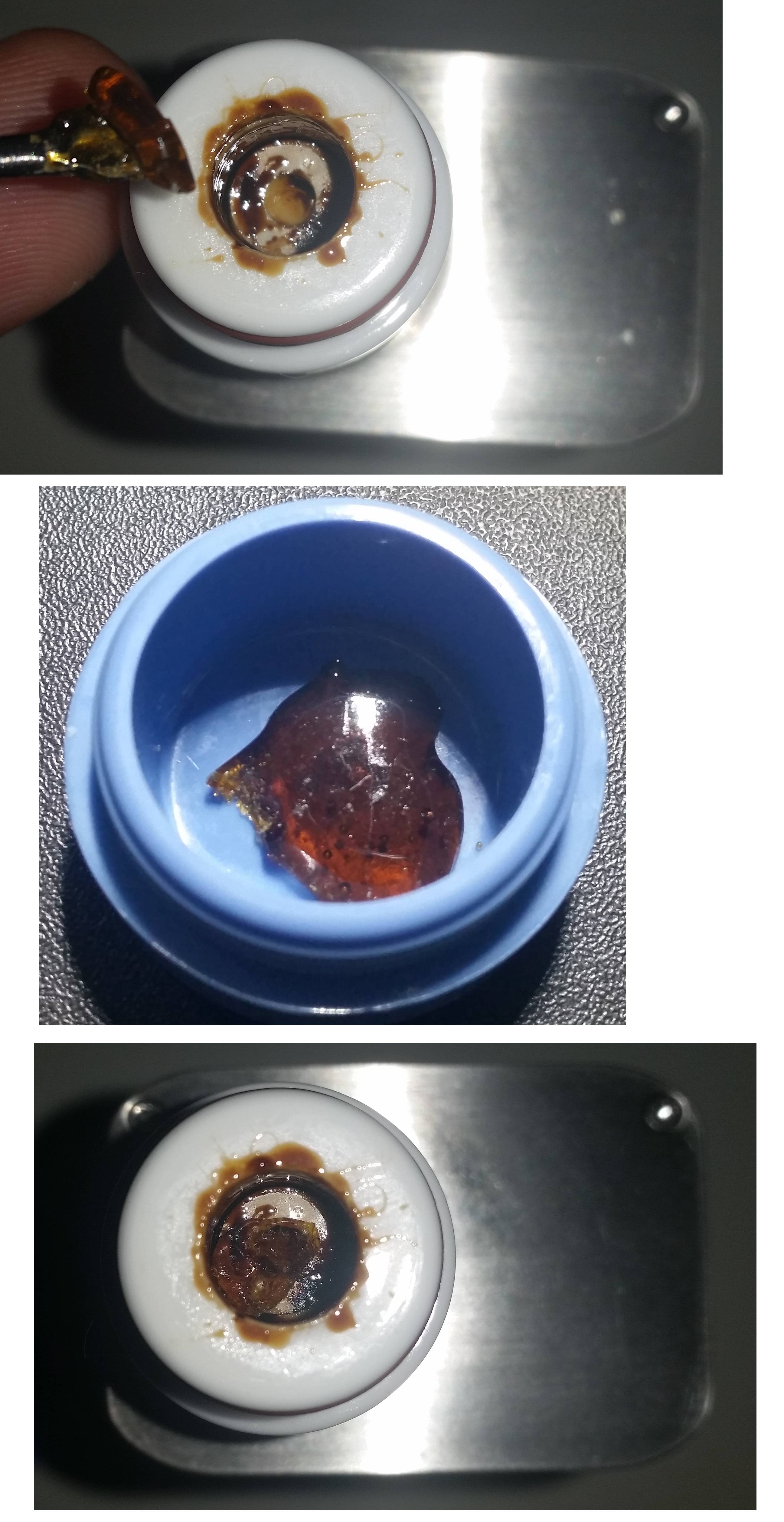
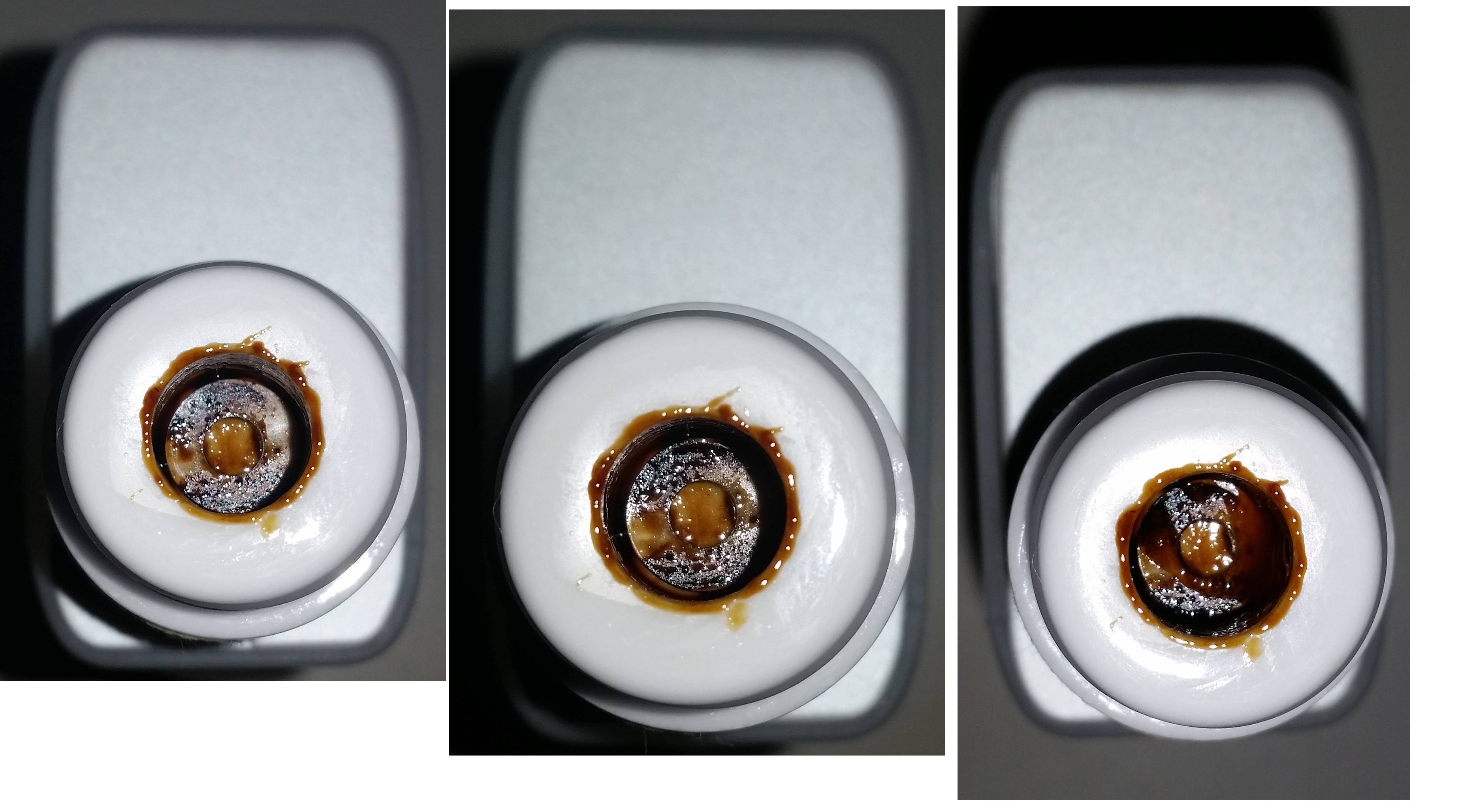





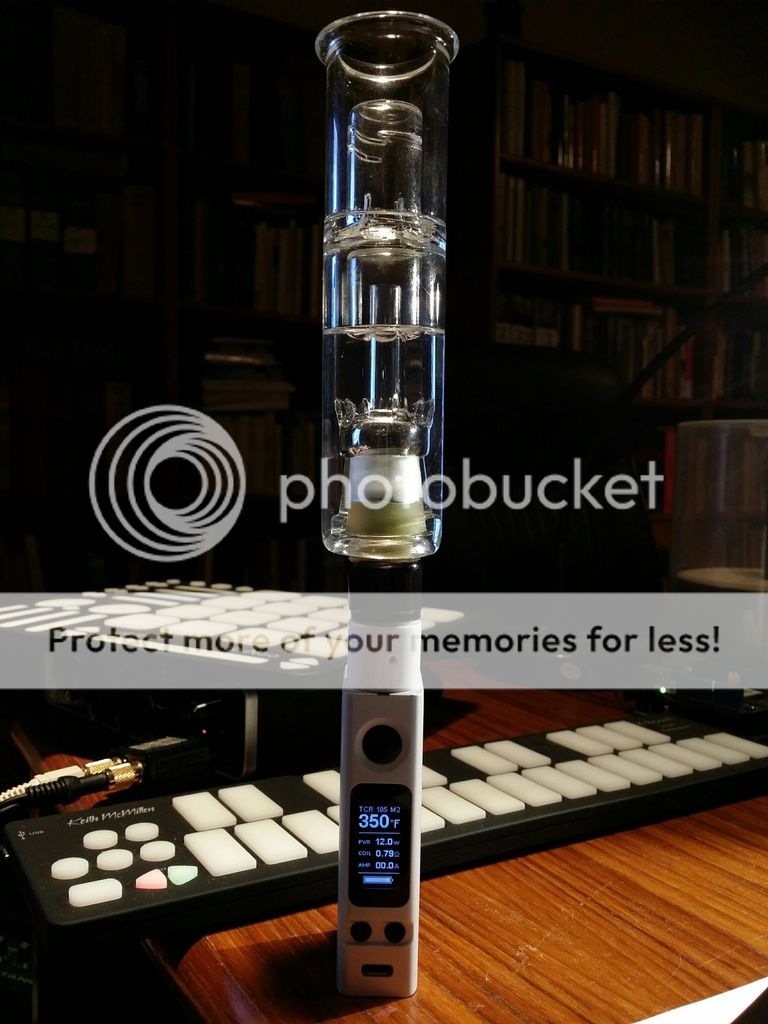


 idk. too much math making my brain hurt now, but we're not done.
idk. too much math making my brain hurt now, but we're not done. 
 Either way he wins because he made me do algebra!
Either way he wins because he made me do algebra!


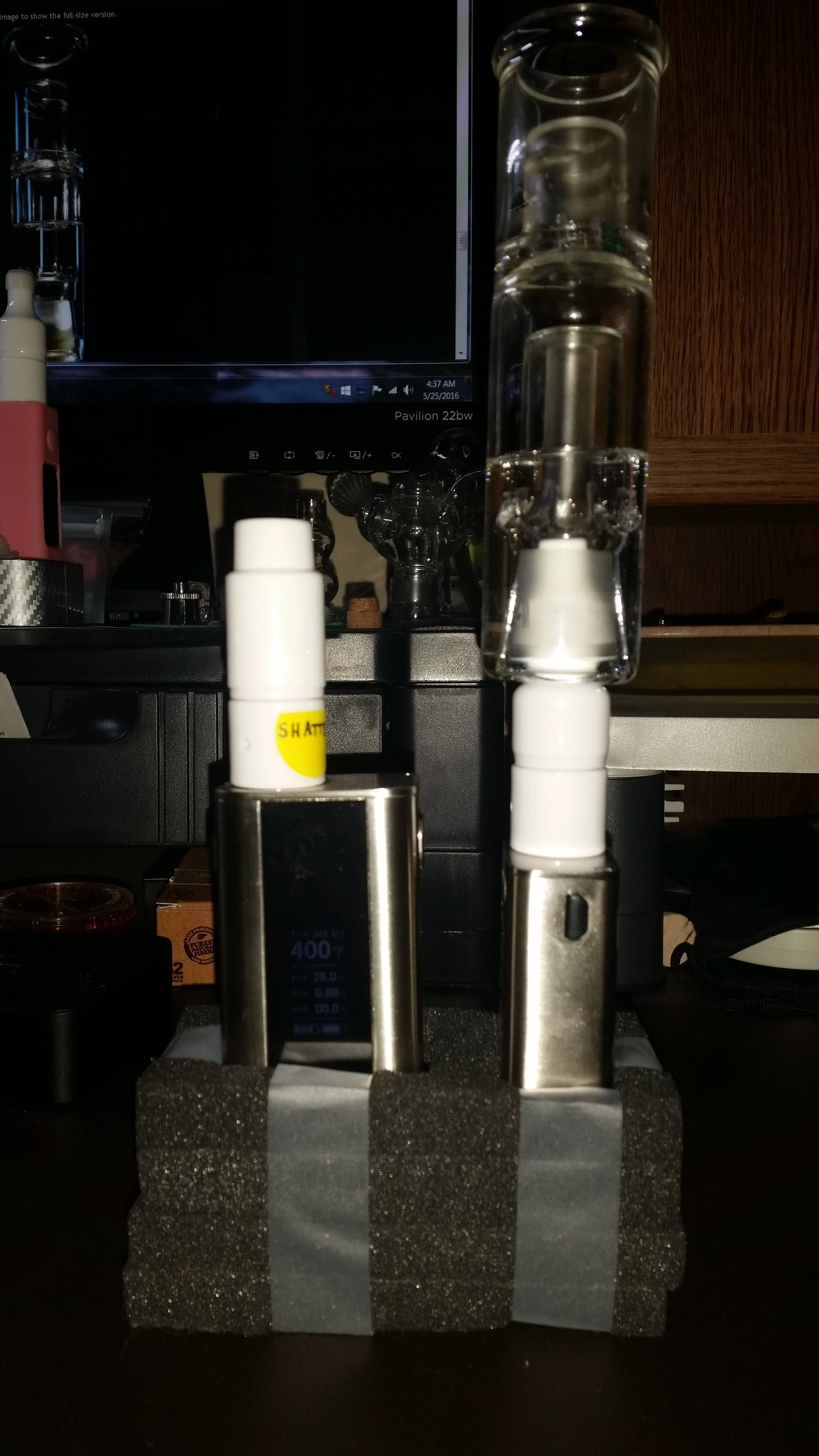
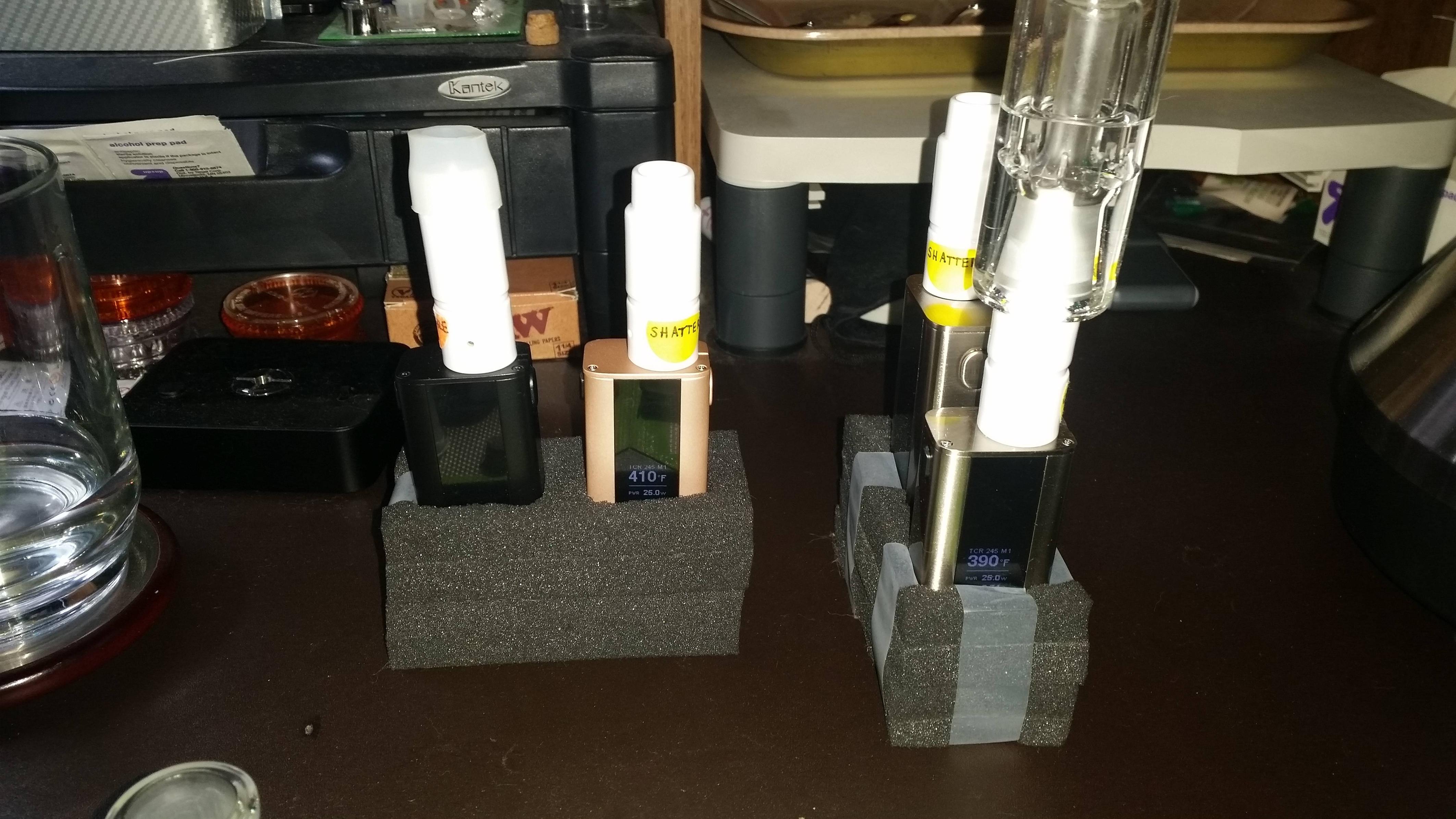

 im kinda new to this stuff ...
im kinda new to this stuff ...